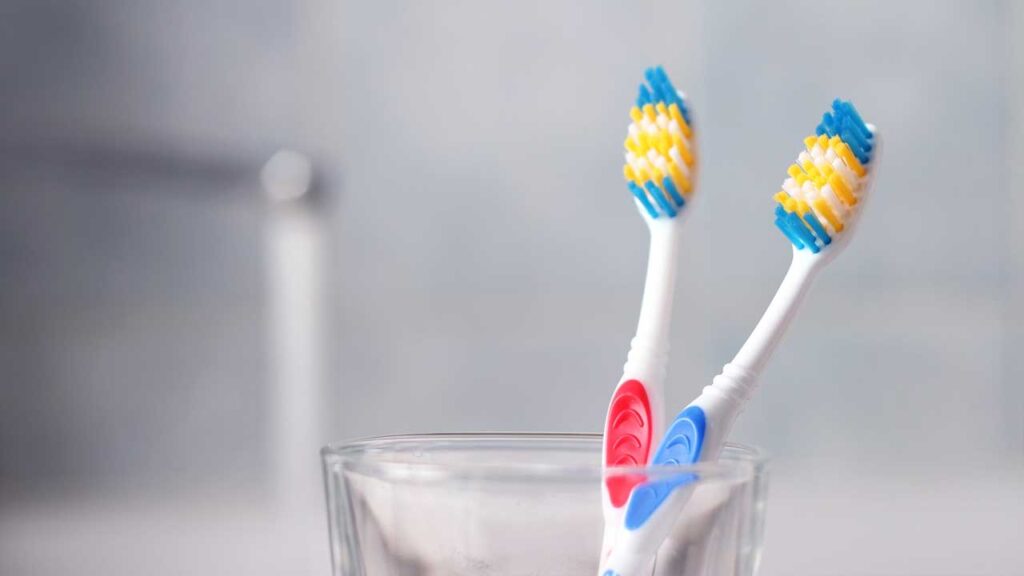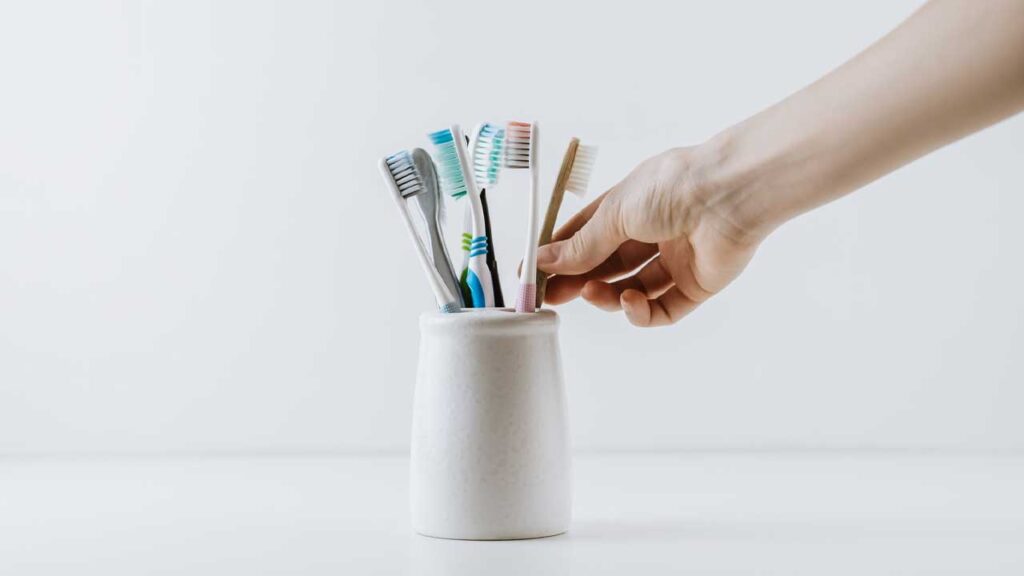Toothpick holders are small containers that store and dispense toothpicks. Toothpicks are thin wooden or plastic sticks that are used to remove food particles and plaque from between the teeth. Toothpick holders can be made of various materials, such as glass, metal, ceramic, wood, or plastic. They can also have different shapes, sizes, designs, and features, such as automatic, retractable, decorative, or portable.
In this article, you will learn:
- What are the benefits of using toothpick holders?
- How to choose the right toothpick holder for your needs?
- How to use toothpick holders correctly and safely?
- How to clean and maintain your toothpick holder
- How to complement your oral hygiene routine with toothpick holders?

Benefits of Using Toothpick Holders
Using toothpick holders can provide several benefits for your oral health and hygiene, such as:
Keeping your toothpicks clean and organized:
Toothpick holders can protect your toothpicks from dust, dirt, moisture, and bacteria. They can also prevent your toothpicks from getting lost, scattered, or mixed up with other items. This can help you keep your toothpicks clean and ready to use whenever you need them.
Enhancing your convenience and comfort:
Toothpick holders can make it easier and more comfortable for you to access and use your toothpicks. Some toothpick holders have features that allow you to dispense your toothpicks with one hand or one push of a button. Some toothpick holders are also portable and compact, so you can carry them with you wherever you go.
Improving your aesthetics and style:
Toothpick holders can also improve the appearance and style of your home, kitchen, or dining table. They can add a touch of elegance, charm, or personality to your space. They can also match or complement your existing decor or theme. You can choose from a variety of colors, shapes, designs, and materials to suit your taste and preference.
Drawbacks of Using Toothpick Holders
However, using toothpick holders can also have some drawbacks for your oral health and hygiene, such as:
- Damaging teeth and gums: Toothpicks can also damage your teeth and gums if you use them too roughly or frequently. They can scratch or chip your enamel, irritate or injure your gums, or create openings for bacteria to enter and cause infection.
- Spreading germs and diseases: Toothpick holders can also spread germs and diseases if you do not clean them properly or share them with others. They can harbor bacteria, fungi, viruses, or parasites that can contaminate your mouth or cause cross-infection.
- Wasting resources and creating waste: Toothpick holders can also waste resources and create waste if you use disposable toothpicks that are made from wood or plastic. They can deplete natural resources, pollute the environment, or harm wildlife.
How to Choose the Right Toothpick Holder for Your Needs?
Toothpick holders come in different types, sizes, and features. Here are some factors to consider when choosing the right toothpick holder for your needs:
Capacity:
The capacity of a toothpick holder refers to how many toothpicks it can hold at a time. The capacity of a toothpick holder depends on its size and shape. Some toothpick holders can hold up to 200 or 300 toothpicks, while others can only hold up to 50 or 100 toothpicks. The ideal capacity of a toothpick holder depends on how often and how many people use it. Generally, you should choose a toothpick holder that has enough capacity to meet your needs without wasting space or resources.
Dispensing mechanism:
The dispensing mechanism of a toothpick holder refers to how it releases the toothpicks from the container. There are two main types of dispensing mechanisms: manual and automatic. Manual dispensing mechanisms require you to open the lid or pull out the drawer of the container to get a toothpick. Automatic dispensing mechanisms allow you to get a toothpick by pressing a button or lever on the container. The ideal dispensing mechanism of a toothpick holder depends on your personal preference and convenience. Generally, you should choose a toothpick holder that has a dispensing mechanism that is easy and comfortable to use.
Material:
The material of a toothpick holder refers to what it is made of. There are various materials that can be used to make toothpick holders, such as glass, metal, ceramic, wood, or plastic. Each material has its own advantages and disadvantages in terms of durability, appearance, maintenance, and cost. The ideal material of a toothpick holder depends on your personal preference and budget. Generally, you should choose a toothpick holder that is made of a material that is sturdy, attractive, easy to clean, and affordable.
How to Use Toothpick Holders Correctly and Safely?
Toothpick holders are easy and simple to use if you follow these steps:
Fill your toothpick holder with clean and dry toothpicks.
You can use wooden or plastic toothpicks depending on your preference. You can also use flavored or colored toothpicks for extra freshness or fun.
Place your toothpick holder in a convenient and accessible location.
You can place it on your kitchen counter, dining table, coffee table, or bedside table. You can also carry it in your pocket, bag, or car if it is portable.
Dispense a single toothpick from your toothpick holder when you need it.
You can do this by opening the lid or drawer of the container if it is manual or by pressing the button or lever on the container if it is automatic.
Use the toothpick gently and carefully to remove any food particles or plaque from between your teeth. You can do this by inserting the tip of the toothpick into the space between your teeth and gently moving it back and forth. You can also use the toothpick to clean around your gums, tongue, or cheeks if needed. Do not force the toothpick into your gums or teeth or apply too much pressure. This can cause bleeding, pain, or damage to your oral tissues.
Dispose of the used toothpick in a trash can. Do not reuse or swallow the toothpick. This can cause infection, choking, or injury to your digestive system.
How to Clean and Maintain Your Toothpick Holder
Toothpick holders are easy and simple to clean and maintain if you follow these steps:
- Empty your toothpick holder of any leftover or expired toothpicks. You can do this by turning the container upside down and shaking it gently or by removing the lid or drawer of the container and dumping out the contents.
- Wash your toothpick holder with warm water and mild soap. You can do this by rinsing the container under running water and scrubbing it with a soft cloth or sponge. You can also use a small brush or cotton swab to clean any hard-to-reach areas or crevices.
- Dry your toothpick holder thoroughly with a clean towel or paper towel. You can also let it air dry on a rack or a flat surface. Make sure that there is no moisture or residue left on the container before refilling it with toothpicks.
- Store your toothpick holder in a cool and dry place away from direct sunlight, heat, or moisture. This can help prevent mold, rust, or damage to your toothpick holder.
How to Complement Your Oral Hygiene Routine with Toothpick Holders?
Toothpick holders can help you improve your oral hygiene, but they are not a substitute for proper brushing and flossing. Here are some tips on how to complement your oral hygiene routine with toothpick holders:
- Use toothpick holders as an occasional or supplementary tool for cleaning your teeth and gums. Do not rely on them as your main or only tool for oral hygiene. Toothpicks can only remove some of the food particles and plaque from between your teeth, but they cannot remove all of them or reach all areas of your mouth.
- Brush your teeth at least twice a day with a soft-bristled toothbrush and fluoride toothpaste. This can help remove most of the plaque and bacteria from your teeth and prevent tooth decay and gum disease. Brush your teeth for at least two minutes each time and cover all surfaces of your teeth.
- Floss your teeth at least once a day with dental floss or an interdental cleaner. This can help remove any remaining plaque and bacteria from between your teeth and below the gum line, where a toothbrush or a toothpick cannot reach. Floss your teeth gently and carefully, following the curve of each tooth.
- Rinse your mouth with water or mouthwash after every meal or snack. This can help wash away any food particles or debris that may have been left behind by brushing, flossing, or using a toothpick. It can also help freshen your breath and prevent bad odors.
- Visit your dentist regularly for check-ups and cleanings. Your dentist can examine your teeth and gums for any signs of problems or diseases and provide professional treatment if needed. Your dentist can also perform a thorough cleaning of your teeth and gums using special tools and techniques
Alternatives to Toothpick Holders that Can Improve Your Oral Hygiene
Toothpick holders are not the only option for maintaining oral health and hygiene. There are some alternatives that can improve your oral hygiene, such as:
Dental floss:
Dental floss is a thin thread that you can use to clean between your teeth and below your gum line. It can remove more plaque and debris than toothpicks, as it can reach deeper and wider spaces. Dental floss can also prevent cavities, gum disease, and bad breath. You should floss your teeth at least once a day, preferably before brushing.
Interdental brushes:
Interdental brushes are small brushes that have bristles that can fit between your teeth and clean around them. They can remove more plaque and debris than toothpicks, as they can scrub and sweep the surfaces of your teeth and gums. Interdental brushes can also prevent cavities, gum disease, and bad breath. You should use interdental brushes at least once a day, preferably after brushing.
Oral irrigators:
Oral irrigators are devices that use a stream of high-pressure pulsating water to clean your teeth and gums. They can remove more plaque and debris than toothpicks, as they can flush out any particles or bacteria from hard-to-reach areas. Oral irrigators can also massage your gums and improve blood circulation, which can help prevent gum disease and inflammation. You should use oral irrigators at least once a day, preferably after brushing and flossing.
Toothpick holders are small tabletop devices that hold disposable quills or wooden toothpicks. They can help you remove food particles and plaque from your teeth and gums, stimulate your gums and blood circulation, and enhance your table etiquette and aesthetics. However, they can also damage your teeth and gums, spread germs and diseases, and waste resources and create waste.
Therefore, you should use toothpick holders correctly and safely, follow these tips on how to choose and use them properly, and consider some alternatives that can improve your oral hygiene.


1 thought on “Toothpick Holders: Tips for Maintaining Oral Health and Hygiene”